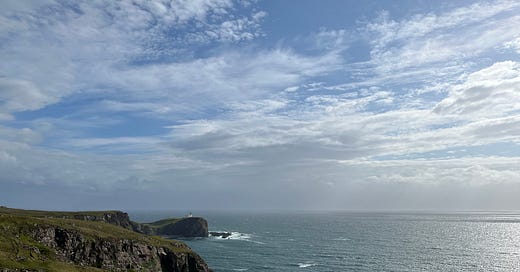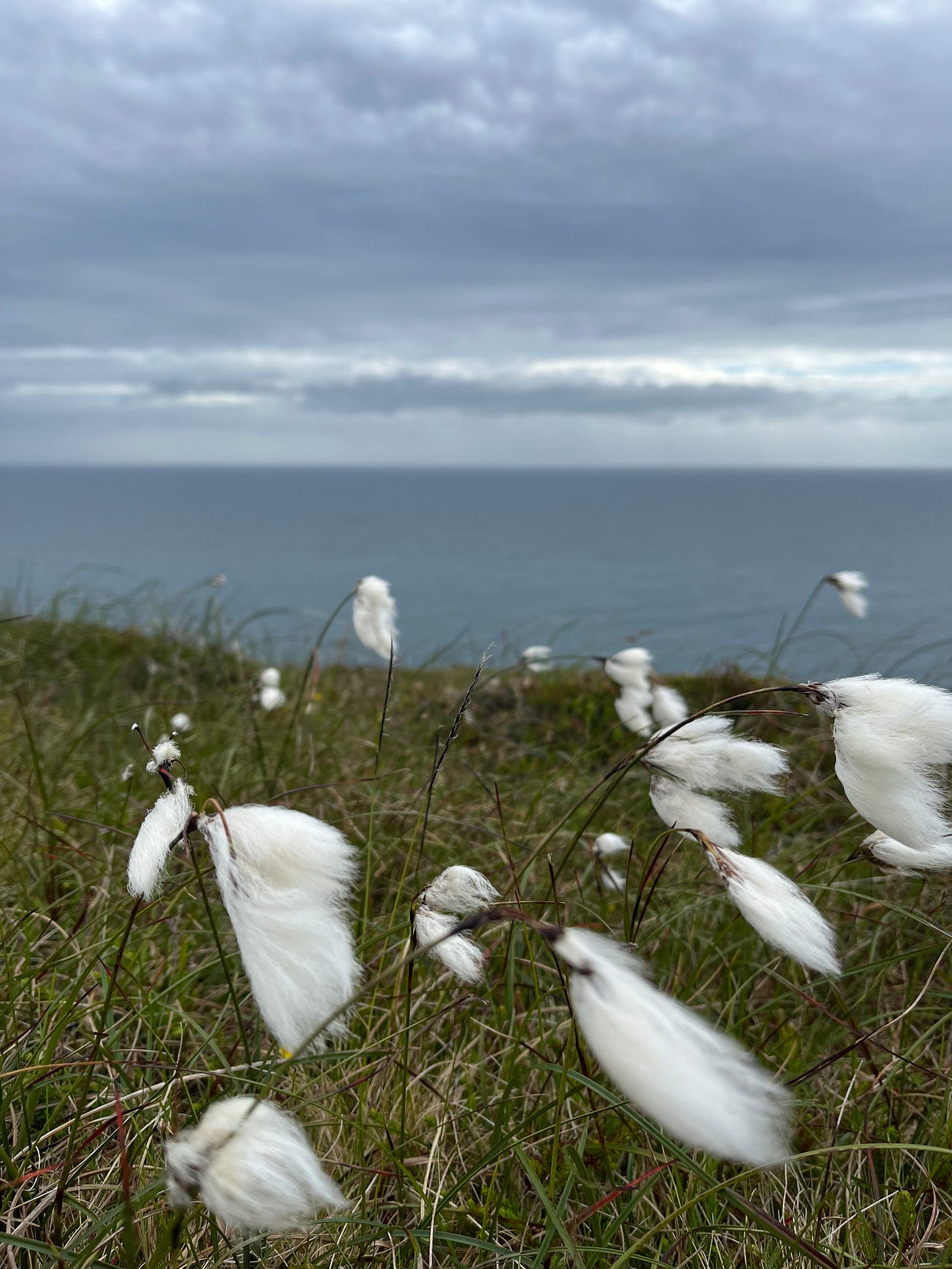Hello, I’m Beth! I’m a full time creator based in the Cairngorms in love with Scotland and Scottish history. Subscribers receive weekly newsletters about Scotland’s history and folklore, and a little about my life living and adventuring in this country. If you’d like to support my work as a writer, you can become a paid subscriber.
Interested? Click subscribe…
The seas of northern Scotland are renowned for their wild nature. Infamous of these is the Minch, a strait separating the mainland of north west Scotland from the islands of Lewis and Harris of the Outer Hebrides. Legend says that the roaring storms of these untameable waters are the creation of its terrifying residents: the Blue Men of the Minch.
Tales of this mythical clan describe their ability to conjure up terrible storms at will, with eyewitness accounts claiming to have seen humanoid creatures leaping and diving amongst the rough waves. When the waters are calm, the Blue Men are sleeping, but their fast changing moods can stir the Minch into a tempest. Unpredictable and dangerous, they are a personification of the sea itself.
It is said that ships have been approached by the Blue Men, their chief reciting two lines of poetry in challenge. If the captain of the ship could return two lines of his own poetry, witty enough to appease their assailants, then the ship would be allowed to continue its passage. If not, then the ship would be capsized and all aboard drowned in the watery depths of the Minch.
Despite their appetite for violence, the Blue Men are understood to be benevolent towards humans, if treated with respect. Old stories from the Outer Hebrides say that locals would pour ale into the Minch as a gift for the Blue Men, in return for calm seas and for quality seaweed to be washed ashore to be used as fertiliser. A surviving tradition in the Outer Hebrides which sees the lighting of candles on the shore on the night of Samhain, the Celtic version of Halloween, is rooted in the relationship between locals and the Blue Men of the Minch.
The legend of the Blue Men goes back centuries. While some believe that they are mythical storm kelpies, others argue that they originate from the days of the Picts. One of the most elusive groups in Scottish history, the Picts were most likely descendants of the native peoples of what we now know as ‘Scotland’. The territory which they covered is quite expansive, including the far north west of Scotland and the Outer Hebrides. Most importantly of all for the myth of the Blue Men of the Minch, the name ‘Picts’ comes from the Romans, who dubbed their opponents north of the Antonine Wall as Picti—the painted people. This probably refers to a Pictish practise of tattooing or body painting.
Alternatively, historians have suggested that this mysterious clan of the sea may have been former slaves who escaped the clutches of the Vikings who captured them. The Vikings roamed the seas of northern Scotland c.750-c.1050, and were infamous for enslaving people from the British Isles and Eastern Europe. Could it be that stories passed down through the centuries, weaving tales of mythological creatures on the waves of the Minch, were really the Picts or a group of freed slaves?
History and mythology often collide and integrate when we examine Scottish history. Whether they truly are mythological creates like kelpies or mermaids, or a historical community of Picts or former slaves, the Blue Men of the Minch remain a fascinating and haunting part of the mythology of north western Scotland. Should you find yourself crossing the Minch to Lewis and Harris, or gazing out across those wild waters from the mainland or the islands, keep a watchful eye. You might just spot something—or someone—amongst the waves.
Tune in next week for more Scottish history, folklore, and adventure.
Beth x






Love this post Beth…..you paint quite a picture. A notable sea crossing even today in Scotland but so far my drams have been accepted and the crossings quiet! However, I still always keep some poetry up my sleeve….
I wonder if there could be a tie between the blue men of Minch and the Fugates of Troublesome Creek in Kentucky. The Fugates were an insular clan that settled in Kentucky in the 1820's and were notable for their blue skin. Eventually it was found to be a treatable genetic condition, but that wasn't until the 1960's. They were popularized in the novel "The Book Women of Troublesome Creek" but the characters in that novel were based on real, blue people.